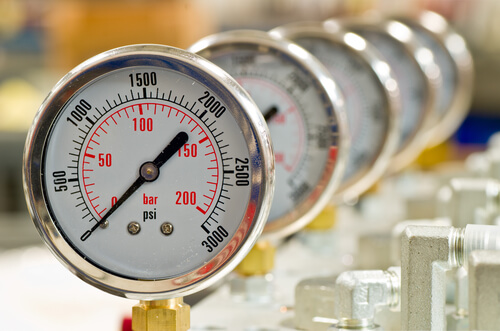The process industry uses pressure gauges very often and just like any other measurement devices, they need to be calibrated at regular intervals to remain accurate. Measurement devices tend to drift over time and unless they are calibrated at certain intervals, they lose their accuracy.
Why Should Pressure Gauges Be Calibrated?
The main important reason why pressure gauges should be calibrated is to ensure employee safety. Also, many industries are required to comply with certain regulations that require a company to calibrate pressure gauges at intervals. This ensures that the plant works more effectively producing more output and money. Some industrial plants use measuring devices like pressure gauges to control emissions. Keeping pressure gauges accurate help to minimize pollution thus, keeping the environment clean.
To ensure that you calibrate your pressure gauges accurately, there are many factors you should consider. What are these factors?
Accuracy Class
Pressure gauges are produced in various accuracy classes and each class indicates the percentage of allowable error of the full scale value of the gauge. When calibrating a pressure gauge, ensure that all values reported should be within the gauge’s class. If you are not sure which class your pressure gauges fall into, contact the manufacturer for the information.
Pressure Media
The common pressure media used when calibrating pressure gauges are liquid and gas. It is important to understand what type of media you need to use when calibrating your pressure gauges. Gas is used to calibrate low pressure gauges and liquid is considered safer for high pressure gauges. The air used is regular, but in some special cases nitrogen needs to be used. For liquid, oil or water is used.
Generating Pressure
What will be the source of pressure applied to calibrate the pressure gauge? To apply pressure when calibrating, you use a dead weight tester, a pressure regulator with a bottle or pressure hand pump. Most industries use a pressure calibration hand pump because they are easy to use and inexpensive. However, to provide accurate pressure, you need to consider using a dead weight tester. Dead weight testers are very sensitive to dirt, they require more attention, they are immobile and they are more expensive than pressure hand pumps.
Calibration / Mounting Position
Since pressure gauges are mechanical, how they are positioned affects the final reading during calibration. You are recommended not to change the position of the pressure gauge while it is being calibrated and it should remain in the same position that it is being used. To have a more accurate position, you should take into account the manufacture’s specifications for the mounting/operation position.
Leak Test Of Piping
Leaks in the piping system can produce unpredictable errors during calibration. It is important to carry out a leak test before calibration to avoid such errors. To perform a simple leak test, the system needs to be pressurized and the pressure allowed some time to stabilize. The pressure should then be monitored to ensure it does not drop too much. Some pressure controllers are designed to maintain pressure even when there is a leak so, you need to pay extra attention when the calibration system has a continuous controller to thoroughly check that the system is not leaking.
To get accurate measurements, ensure that you purchase high quality calibration systems for your pressure gauges. At Willrich Precision Instrument, we only stock high end calibration systems from leading brands and we have a team on standby to help you pick the instrument that will work best with your measurement device. For more information about our pressure gauges calibration systems, contact us today!





